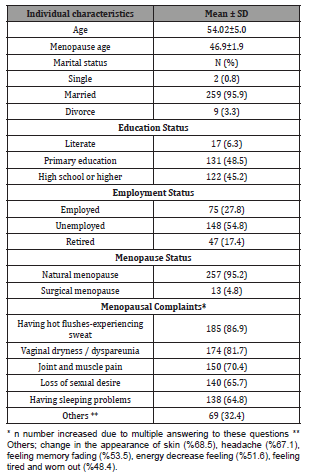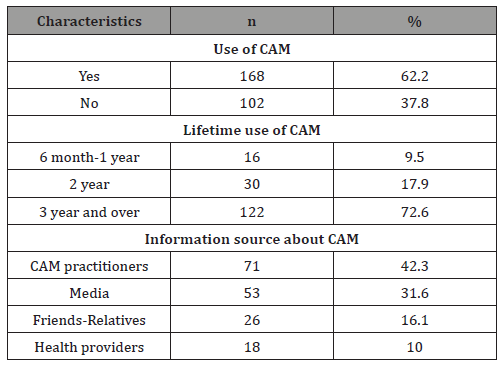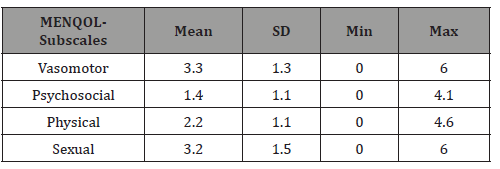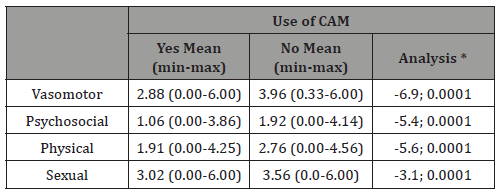Authored by Nanda Rachmad Putra Gofur*,
Abstract
Introduction : HPV can infect basal epithelial cells of the skin or deep tissue and are categorized as either skin type or mucosal type. This skin type is epidermotropic and infects the surface of the keratinized skin, targeting the skin of the hands and feet. The type of mucosa that is infected is the lining of the mouth, throat, respiratory, or anogenital tract epithelium. The direct correlation between the number of sexual partners and the presence of HPV was shown to be independent of other risk factors such as age, race or use of oral contraceptives as well. Several genes and risk factors have been associated with genital HPV infection. The purpose of this review is to determine the genes and risk factors for Wharts. Discussion : Detection of various genital HPV as many as 28 types that have been identified so far can use various methods. Identification of viral DNA or RNA by various hybridization techniques. Time to analyze the results is also very important to know the validity of the different HPV techniques, the sensitivity, specificity, and the spectrum of HPV types detected. Southern Blot hybridization is still used as the standard for DNA identification of various types of HPV. However, between 5000 and 50 000 copies of HPV DNA must be present in a clinical sample to be detected. Conclusion : The seroprevalence of other types, including 18, 31, 33, 39, 58, and 59, ranging from 9% to 23%. In addition to VLP, HPV DNA is also most common in women under 25 years of age, prevalence tends to peak in women over 25 years of age using HPV antibodies. Number of sexual partners was recognized as an independent risk factor for genital HPV infection in patients with immunosuppression will also be a risk factor for HPV infection, for example in patients with autoimmune, HIV infection and organ transplantation.
Keywords: Gene; Risk Factor; HPV infection; Wharts disease
Introduction
HPV can infect basal epithelial cells of the skin or deep tissue and are categorized as either skin type or mucosal type. This skin type is epidermotropic and infects the surface of the keratinized skin, targeting the skin of the hands and feet. The type of mucosa that is infected is the lining of the mouth, throat, respiratory, or anogenital tract epithelium.
Some HPVs are associated with transient warts whereas other manifestations may be risk factors for invasive cervical cancer and precancerous lesions. Currently, more than 150 types of HPV have been identified and about 40 can infect the epithelial lining of the anogenital tract and other mucosal areas of the human body. The incidence rate of genital warts in Canada also increased significantly, 43,586 EGW events from 1999 to 2006, finding that the overall incidence slightly increased from 1.07 per 1,000 population in 1999 to 1.26 per 1,000 population in 2006. Overall incidence between years 1999 and 2006 were always higher in men than women, being 1.31 per 1,000 population in men and 1.21 in women. Both decline gradually with age. However, several studies have noted an increase in HPV infection in women after age 50.
Transmission of HPV infection can be through two events, through direct sexual contact or without sexual contact. For condylomata acuminata the interval between exposure and clinical appearance of disease ranged from 3 weeks to 8 months. Incubation period data for subclinical and latent infection are unknown. The direct correlation between the number of sexual partners and the presence of HPV was shown to be independent of other risk factors such as age, race or use of oral contraceptives as well. Several genes and risk factors have been associated with genital HPV infection. The purpose of this review is to determine the genes and risk factors for Wharts.
Discussion
Detection of various genital HPV as many as 28 types that have been identified so far can use various methods. Identification of viral DNA or RNA by various hybridization techniques. Time to analyze the results is also very important to know the validity of the different HPV techniques, the sensitivity, specificity, and the spectrum of HPV types detected. Southern Blot hybridization is still used as the standard for DNA identification of various types of HPV. However, between 5000 and 50 000 copies of HPV DNA must be present in a clinical sample to be detected.
Gene Associated HPV
Recently, a more sensitive technique on HPV DNA amplification uses polymerase chain reaction (PCR) followed by a simple hybridization method. This method has been widely applied, especially in large epidemiological studies. This allows between 10 and 100 copies of the HPV DNA to be found. In addition, combined with phylogenetic classification, new HPV types can be created. With PCR, HPV type-specific primers allow detection of a single HPV type whereas consensus or generalized primers strengthen the entire panel of different HPV types, shown in table 3. Standardization of PCR methods will be required to allow comparison of valid results produced by various laboratories. In estimates using one point, assays using dot-blot hybridization varied between 1% and 20%, 8% and 11% using in situ hybridization filters, 3% and 29% using Southern blot, 5% to 53% using general-type PCR and HPV specific. This prevalence estimate consists of subclinical and latent disease (Table 1).
Table 1: Genes Associated HPV.

Research shows that HPV infection is more common in women than men, with the highest cohort occurring among sexually active women under the age of 25. Other data suggest that at least 80% of women have had an HPV infection by the time they reach age 50. Data A recent study from another study in British Columbia showed that the prevalence of genital warts was highest among women aged 20 and 24 (3.38 per 1,000 population), whereas in men, the incidence peaked between ages 25 and 29 (3.03 per 1,000 population). Another study by Jiang and colleagues noted a high prevalence of HPV infection in Canada relative to other parts of the country and an almost 50% higher prevalence (27.6% vs 18.5%) among Aboriginal women compared to non-Aboriginal women in the region. HPV-16 was the most common strain found in 14,598 Pap smear cytology samples. As with women, HPV infection is associated with cancer and non-malignant disease in men as well, although data for the male population are sparse. One international study estimated that asymptomatic genital HPV infection affects 65.2% of men aged 18-25 years.
Genital HPV infection is also common in men, with the prevalence using the PCR method ranging from 3.5% to 46.4%. In a case-control study of the role of men in the epidemiology of cervical cancer in Colombia and Spain, detectable HPV DNA was collected from the distal urethra and the outer surface of the glans penis and the penile coronal sulcus. In Colombia, 26% of husbands of 210 women with cervical cancer and 19% of husbands of 262 women without cervical cancer were positive for HPV DNA by PCR, whereas in Spain, 18% of husbands of 183 women with and 4% of husbands of 171 women without cervical cancer who were positive for HPV DNA.
Serological tests for certain types of HPV have been used to detect antibodies to viral particles such as (VLP), which is a viral capsid synthesized from the viral L1 protein. The prevalence of HPV infection using VLP as antigen showed that, among women clinically absent of HPV, 2-43% had antibodies to HPV 16, and 9-25% had antibodies to HPV 6 or 11. The seroprevalence of other types, including 18, 31, 33, 39, 58, and 59, ranging from 9% to 23%. In addition to VLP, HPV DNA is also most common in women under 25 years of age, prevalence tends to peak in women over 25 years of age using HPV antibodies.
The study showed 21% of women (n = 90) reported having only one male sexual partner positive for HPV via the PCR method compared with 69% of women (n = 102). Frequently changing partners 10 or more (OR = 11-2, 95% CI 4.9-24.4). Previous studies have not shown an association between HPV detection and sexual activity, this is due to the possibility of misclassifying HPV and its manifestations and the small sample size of subjects which may distort the results. Subclinical HPV infection and HPV-associated disease are common (64% to 70%) in male and female partners with cervical HPV infection and intraepithelial neoplasia.
The study reported 24 women affected by genital warts, after 2-4 weeks of sexual intercourse with a husband who had warts on his penis. Transmission of genital HPV infection does not have to be intercourse into the vagina but can be done through skin-to-skin contact in the genitals. The presence of abrasions on the genital skin is a place where the virus enters, the virus enters the stratified epithelial cells. Transmission of HPV infection is not only with sexual activity, transmission through the fingers can also be. In a recent study of men and women with genital warts, the same types of HPV were found in genital and finger samples.
Transmission of HPV 6 or 11 to the baby by an infected mother can cause recurrent respiratory papillomatosis (RRP), although it is still rare. It remains unclear whether vertical transmission through the amnion is intact or during birth. Peripartal transmission was demonstrated by a study showing HPV DNA in 33% of 45 nasopharyngeal aspirates from neonates, using Southern blot, and HPV DNA in only two amniotic fluid samples. Only 2-8% (2 of 72) oropharynx in newborns are positive for HPV by dot-blot hybridization in other countries. Peripartal transmission to the genital area (n = 4) and oral cavity (n = 2) was demonstrated in newborns from ten HPV-positive mothers based on specific PCR analysis.
Studies in preschool children (n = 21) in oral and genital HPV infections were positive for HPV 6 in 24% and for HPV 16 in 19% according to type-specific PCR compared with 17% and 23%, in adult men (n = 35) . Thus, the oral cavity can act as a reservoir for genital HPV. In addition, the presence of “high-risk” HPV types such as HPV 16 and HPV 33 can lead to malignant lesions as indicated for tonsillar carcinoma. Genital HPV types such as HPV 16 and HPV 35 can also be found in skin lesions of the periungual area and are potentially infective for the genital area. Fomites may play a role in transmitting the virus since HPV DNA can be demonstrated on a small number of gynecological instruments after sterilization. Transmission from mother to fetus during pregnancy can occur and cause laryngeal papillomatosis or condylomata can occur in the first week since the baby is born.
Risk factor Associated HPV
A number of risk factors have been associated with genital HPV infection. So far only some of these factors have been examined in relation to its progression to cancer. The risk factors associated with HPV infection are shown in (Figure 1).

Number of sexual partners was recognized as an independent risk factor for genital HPV infection with an odds ratio (OR) of 4.3 (95% CI 21.9.0) for <16 years to 24 years in studies in Colombia and Spain measured by consensus-PCR. In patients with immunosuppression will also be a risk factor for HPV infection, for example in patients with autoimmune, HIV infection and organ transplantation. Renal allograft recipients are at increased risk for genital warts. This was confirmed for latent and subclinical HPV infection when 27% of women (n = 49) with renal allografts were positive for HPV-16 or 18, compared with only 6% of controls (n = 69).
Individuals who are HIV positive have high rates of HPV infection and HPV-associated neoplasia. This phenomenon is currently explained by changes in the immune system of HIV-infected persons increasing the risk for the acquisition of a new one. HPV infection or reactivation of latent HPV infection. Transactivation of viral replication may be another interaction pathway between these viruses. Cytological markers of HPV infection were found in HIV-positive women at significantly higher levels compared with women at risk of HIV infection or HIV-negative women. Symptoms of HIV infection in women (n = 33) indicated a significantly higher 70% HPV prevalence than in asymptomatic HIV-positive women (22%) or in HIV-negative high-risk women (22%).
The peak prevalence rate of HPV infection spans the age range of 20 to 24 years, with a steady decline with age. The PCR method applied to patients under 25 years of age (n = 872) showed that 43% were HPV-positive, compared with 32% in the 26- and 35-years age groups (n = 617) and 21% in women older than 35 years. (n = 21%). Other studies on HPV have shown a similar distribution pattern across age groups. The effect of pregnancy on HPV detection is controversial although studies are needed to find higher rates of HPV detection during pregnancy: 8% to 20% in nonpregnant women and 9% to 35% in pregnant women. Four of the six studies found an increase in prevalence during pregnancy and three of the four studies described a decrease in HPV detection postpartum. Early age at first birth was a risk factor for <16 years vs 24 years in the PCR method.
Patients using oral contraceptives (OC) had an increased risk factor of 1.5 for condylomata acuminata which increased to 9-8 after long-term use. Using Southern blot analysis, current OC use was associated with HPV positivity. A linear relationship between OC use and HPV was detected by consensus primer PCR was evident in female students with an OR of 2.8 after one year of OC use and an OR of 4.6 after 4 to 5 years of OC use. The use of OCs may have a synergistic effect with HPV. Hormonal factors also influence the transcription of the HPV genome also in vitro. Eightfold transcriptional expression of HPV E6 and E7. A history of smoking was associated with an increased risk for condylomata acuminata (RR = 3.7; 95% CI 1.8-7.6). Increased concentrations of nicotine and cotinin are found in vaginal mucus. Smoking also causes immunosuppression by reducing the Langerhans cell population and can trigger HPV infection. Nutritional factors were also found in patients with vitamin A, B-carotene, vitamin C, and folic acid deficiencies. Using the Southern blot for HPV 6, low folate levels were an independent risk factor for HPV compared with women with folate above nutritional intake.
Conclusion
The seroprevalence of other types, including 18, 31, 33, 39, 58, and 59, ranging from 9% to 23%. In addition to VLP, HPV DNA is also most common in women under 25 years of age, prevalence tends to peak in women over 25 years of age using HPV antibodies. Number of sexual partners was recognized as an independent risk factor for genital HPV infection in patients with immunosuppression will also be a risk factor for HPV infection, for example in patients with autoimmune, HIV infection and organ transplantation.
To read more about this article....Open access Journal of Biomedical Engineering & Biotechnology
Please follow the URL to access more information about this article
To know more about our Journals...Iris Publishers












